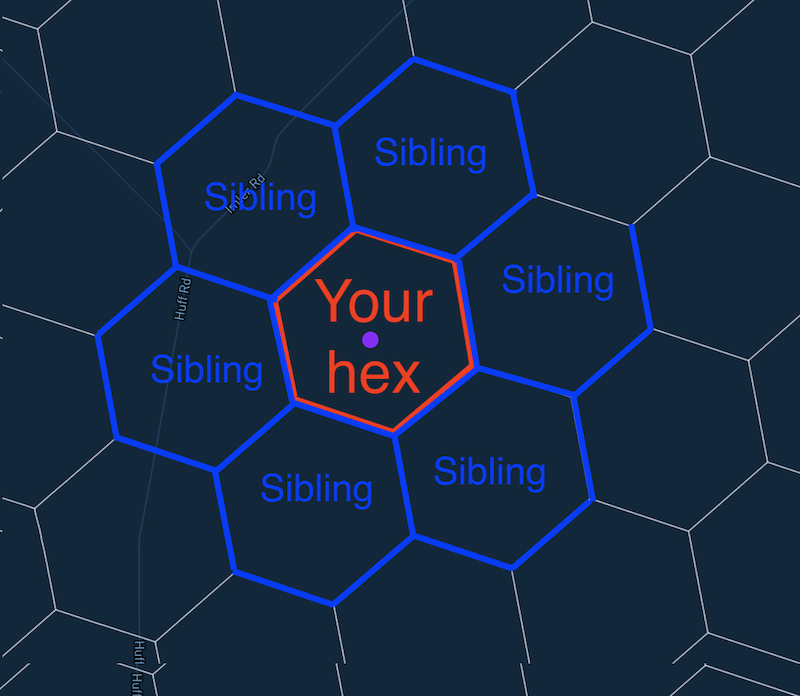It’s one of the most confusing aspects of Helium; you put up your hotspot in an “empty” res 8 hex, but you still get your transmit rewards scaled. Why is that, and what can you do about it?
First, let’s talk about “transmit reward scaling”. What is it? Let’s take it straight from the Github proposal:
[…]for each transmit, the transmitting hotspot’s reward will be based on the number of witnesses and then scaled by its own transmit reward scale.
For witnesses, they will receive a portion of reward based on the number of witnesses scaled by the transmitter’s reward scale.
Translation –>
When you beacon, any reward “assigned” to you for that beacon will be multiplied by your transmit reward scale. If you have a transmit reward scale of .5, all the rewards you get for beaconing will be cut in half. (Your Reward) x (0.5) = 50% of your rewards.
When you witness, any reward assigned to your hotspot is scaled by the transmitter’s reward scale. That means if you witness a hotspot’s beacon, but that hotspot has a transmit reward scale of .5, your witness reward will be cut in half. (Your Reward) x (0.5) = 50% of your rewards.
But how the heck is the rewards scale calculated? Which resolution should you look at? Here’s the vid:
What’s the short version for readers?
- Your reward scale is a function of hotspot density assessed at different scales (resolutions).
- Helium assesses your rewards scale at EVERY resolution.
- The transmit reward scale calculation is a “waterfall”, affecting every resolution from 4–10.
- You can be in your own res 8, or res 7 but still be in an overcrowded res 4 and get scaled. See the video for an example.
- Sometimes the rewards don’t make sense. This can usually be explained by blockchain lag, OR it’s likely that Helium is doing some behind-the-scenes math to combat gaming.
Groundwork for Understanding HIP17 — Hexes & Siblings
Let’s start with the idea of siblings. At any resolution size, a sibling is any hex sharing a side with your hex. Every hexagon has 6 sides and therefore 6 sibling hexes.

A sibling is just one of 3 chain variables, or “chain vars” that the Helium blockchain uses to determine transmit reward scaling at any resolution size.
The chain variables are:
- Density Target — How many hotspots can be in a hex WITHOUT any other hotspots around
- Density Max — The most number of hotspots you can have in your hex, even if the Sibling/Density Target variables are met
- Siblings — The number of siblings that need to meet the Density Target before you can move to Density Max
For example, at resolution 8 (res 8), the chain vars are 2, 1, 4. Yes, it’s confusing. No, I didn’t write it. Yes, I can explain it. I’ll go in order of the chain vars.
- 2 refers to the number of siblings that will need to have the Density Target in them in order for your hex to have up to the Density Max before being scaled.
- 1 is the Density Target, or the number of hotspots per hex Helium allows IF the hotspot had no other hotspots nearby.
- 4 is the Density Max, which is the maximum number of hotspots you can have in a hex once conditions are met (Number of Siblings each having the Density Target.)
That means if you’re in a res 8 hex in the middle of the desert with no one around you, you can only have 1 hotspot per hex before you get TRS’d (Transmit Reward Scale). If you had 2 hotspots in your hex, your TRS would be 0.5, or 50%.
If you’re in a res 8 in the city where it’s a little more crowded, and you have at least 2 siblings that ALSO have 1 hotspot in them, then you begin to be able to add more hotspots, up to 4 hotspots in your hex before getting TRS’d.
The same thing applies at every resolution. Once you get it, it’ll make a lot more sense.
The last thing to remind you of is that you’ll frequently see wonky numbers that won’t make sense. Sometimes those are outdated numbers that just take a few days to drop off. Sometimes that’s a result of the “children” hexes affecting the area covered (more on that in the HeliumVision Master Class, which you should totally sign up for.)
At the end of the day, even an 8 year old child could look at New York City and know it’s overcrowded, or Basalt, Colorado and know it’s underpopulated. While this is a little bit of rocket science (the guy who wrote it now works on rockets), the intent is one of common sense: There is no benefit to the network for overcrowded areas.
That’s really all you have to remember. Best of luck with your deployments, and if you need help going deeper or optimizing your Helium hotspot, consider hiring me.
Rock on!

Leave a Reply